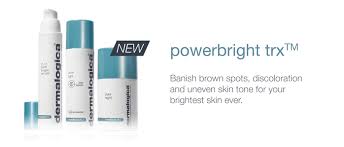Causes of Hyperpigmentation
As we approach summer I thought this would be the perfect time to delve into some of the causes of hyperpigmentation and how we can help to prevent future occurrences. Aside from fine lines and wrinkles, hyperpigmentation is the next most common gripe of those suffering from premature ageing.
Facultative versus Constitutive Skin Colour
Skin colour and pigmentation can be either facultative or constitutive or a combination of both
Constitutive: Is the basic melanin that we inherit and has no direct effect from the sun, hormonal changes, stress etc. This includes moles and freckles. What we are born with, what we inherit from our parents and our race will determine how colour and pigmentation is dispersed
Facultative: Is the result of our surroundings and is often reversible if we take away the cause, eg, tanning. This is termed as hyperpigmentation and can be described as darker patches of skin or dark spots which look a little like freckles. Certain stimuli can also cause hypopigmentation, which are lighter areas or spots on the skin. Facultative pigmentation are the marks that life leaves on our skin through a range of different causes
Causes of Pigmentation
Hormonal – Imbalances can cause a variety of pigmentation marks across the skin, both hyper and hypo. Melasma and Chloasma, often termed the pregnancy mask, may appear at any time during the 9 months. The contraceptive pill can also cause pigmentation. At times of stress, the cortisol hormone can stimulate melanocytes (cells responsible for colour in the skin) usually across the forehead and around the eyebrows
Inflammation & Trauma – Eczema, Psoriasis, Dermatitis and Acne can all leave their marks on the skin. The Langerhan cell; the 1st cell in the immune response, stimulates melanocytes causing post inflammatory pigmentation. Think of all the scratching, picking and touching these conditions may cause us to do and then consider the constant stimulation of the Langerhan cell…..that innocent little break out can leave its mark forever on your chin – STOP MESSING!
Sun Exposure – Mr.Sun, makes us happy now that summer is just around the corner but creates havoc for our skin. Not only does it cause premature ageing and mutation in the cells, it is also the leading cause of hyperpigmentation. Look for a physical sunscreen, rather than a chemical sunscreen, that will reflect the uv rays away from the skin instead of converting and dispersing on the skins surface. Apply regularly throughout the day and stick to a minimum of factor 30….and all the way down to your chest (see below)
Chemicals – I have treated countless ladies over the years with heavy pigmentation on their necks and décolletage. Its the tradition to spray the neck with your favourite perfume, but a lot of fragrances react with UV leaving you mottled and freckly….go look at your necks now and guarantee you will find pigmentation. But I dont wear perfume to the beach I hear you say! What about your drive to work when the sun shines through the car window or sunroof? Try and get into the habit of spraying your perfume in front of you and walking into the mist, rather than direct squirts onto the neck
Medications – Malaria and Hypertension medications can cause hyperpigmentation, along with others. Check the side effects so that you can minimise the damage
Different forms of hyperpigmentation
PIH – Post-Inflammatory Hyperpigmentation – Common on asian and deeper mediterranean skins. An increased or abnormal distribution of melanin stimulated by the immune response. Deeper and darker scar tissue is produced down to the dermis
Sun Exposed Skin – When we are exposed to the sun, melanin is produced to protect us from UV, a by-product of this reaction is colour. This appears 24-48 hours after exposure. Sun exposed skin will look dull, dark and patchy with lines and wrinkles. Repeated sun exposure will damage the melanocyte cell resulting in erratic behaviour. From the age of 30, we start to produce less melanin, which means the skin starts to have a mottled appearance….increasing with age as we produce less and less melanin
Lentigines (Age Spots) – Large irregular brown patches of sun exposed areas. They do not fade in winter and are common on the face, back of hands and forearms.
Can we ever get rid of pigmentation?
Yes and no. Hypopigmentation (white patches) cannot be treated and is there for life. Hyperpigmentation (dark) can be slowly and patiently treated in a variety of ways
Laser – A laser is programmed to suit your genetic skin colour and grade of pigmentation. The laser burns the targeted area over a course of treatments, causing the pigmentation to dry, scab and fall away from the skin. However – you cannot have laser if you are still exposing yourself to UV. You will risk making the pigmentation much, much worse as the skins sensitivity to UV is increased
Chemical Peels – Working on a similar approach to laser, where chemicals target the pigmented areas to create aggressive shedding of the skin. Again – No UV during the course of treatment
Dermabrasion – Crystals or Diamond heads are drawn across the skin to lift up dead skin cells. Over time, and with continued regular treatment, pigmentation can lighten and even disappear. I have a client here on the island who had large age spots at the temples and cheeks. We totally erased 2 of the largest ones, and broke down the smaller spots through a concentrated course of treatment
Skin Care Regime – There are some excellent products on the market today which prepare, treat and protect the skin from the cause of pigmentation. But these are not miracle cures. be prepared to invest your time, money and patience. However the end result is brighter, healthier and protected skin, with other skin concerns treated such as fine lines and wrinkles. Check out the Dermalogica PowerBright range of products and facials.
I think key for those of us living here is being sensible with the sun. We all love it, those of you who know me will agree that I am tanned for most of the summer months, however, I am limiting the damage to my cells by protecting it with a high SPF, all day every day, using a quality skin care regime and working towards a low stress level as much as I possibly can. Hyperpigmentation looks dulling and ageing on the skin, but the more important matter at hand here is the damage taking place on a deeper level through cell mutation and inflammatory responses….we must protect ourselves.



